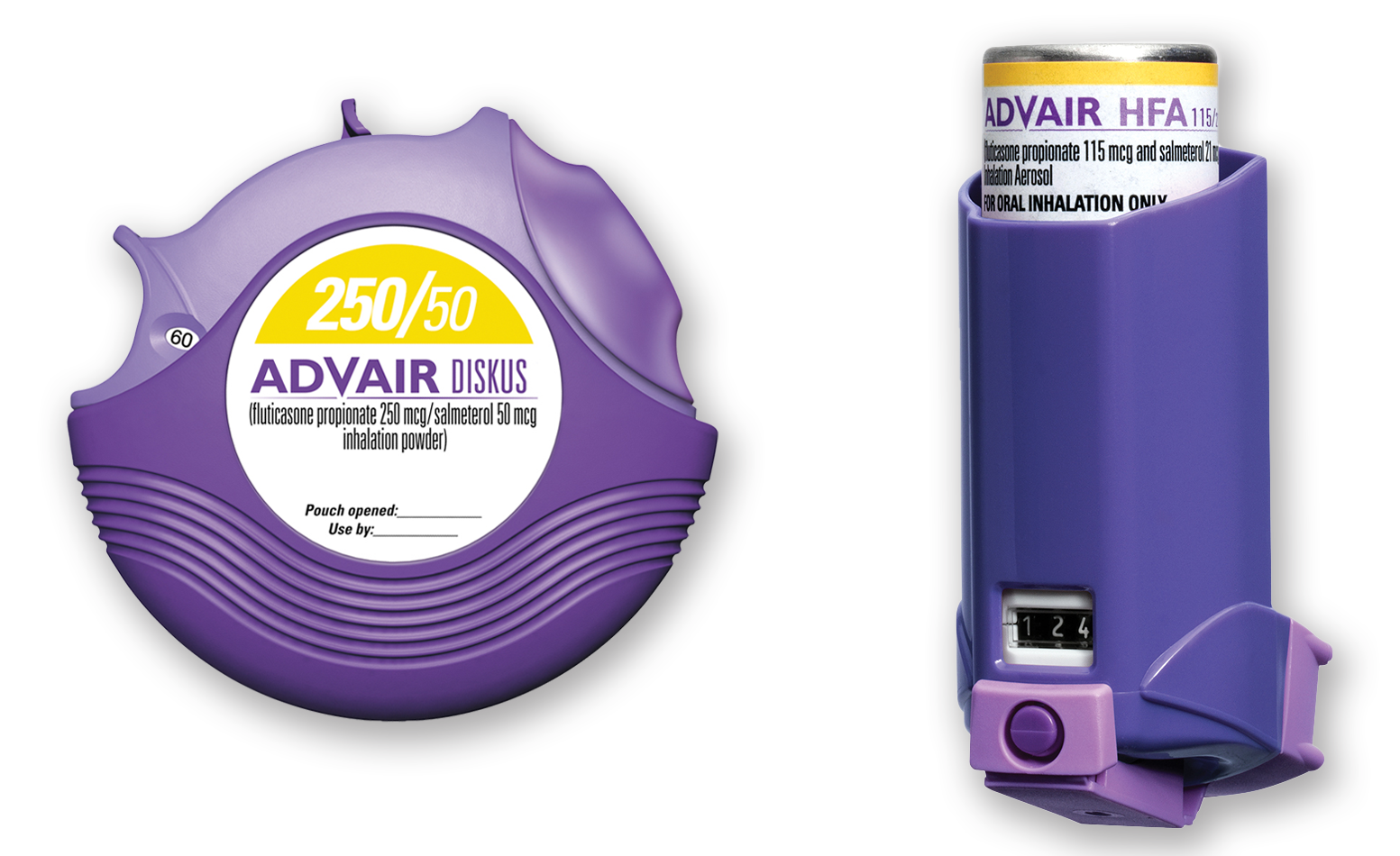 |
| Inhaled corticosteroids of 1,000µg or more put patients at greater risk for development of cataract. Photo: GlaxoSmithKline. Click image to enlarge. |
Optometrists and ophthalmologists know very well the strong association between steroid use and cataract development, but a group of researchers wanted to update literature on the association in two under-studied patient populations: those with asthma or chronic obstructive pulmonary disease (COPD).
Included in the systematic review were 12 studies that provided effect estimates for pooled analyses. Only one of the observational studies reported no association between corticosteroid use and cataract development; the rest did for both asthma and COPD cohorts. On average, pooled analyses indicated that a doubled risk of cataract development in corticosteroid-exposed asthma or COPD patients. As well, daily high-dose inhaled corticosteroid (ICS) of greater than or equal to 1,000µg was associated with significant risk for developing cataract and predisposition to subsequent cataract surgery. One study, however, indicated systemic corticosteroids increased cataract risk more than ICS.
To elaborate on their findings, the study authors explained, in their paper on the work, how most COPD cases in the West are caused by smoking tobacco. Other than corticosteroids, tobacco smoke has also been proposed as a potential risk factor for developing cataracts. Similarly, asthma has been linked with cataracts for other reasons than corticosteroids as well. With asthma, it has been suggested that underlying inflammation may lead to cataract development, with a pathway having already been previously described for development of cataract in allergic asthma patients. Despite this identification, the link of chronic airway inflammation in asthma and cataract risk still needs to be investigated further for clearer understanding.
The investigators compare their results to one meta-analysis conducted over a decade ago by Weatherall et al. This prior research focused on case-control studies looking at ICS use association with cataract risk; they found ICS use increased cataract risk by about 25% for each 1,000µg increase in daily dose. Similar to these findings, the present study outlined an observed increased risk of cataract with daily ICS doses of 1,000µg or more. As well, a dose-response relationship was observed with corticosteroid exposure and risk of cataract, with a threshold of 1,000µg of ICS daily dosing suggesting a comparable risk as with systemic versions.
To combat this doubled risk for these patients, the authors suggested that “cataract screening could, however, be applied for asthma and COPD patients prescribed high-dose ICS treatment in order to reduce the cataract development risk,” they wrote. Along with this precaution, “more research is needed on the best-possible corticosteroid treatment strategies according to treatable traits and other disease characteristics in both asthma and COPD and also to reduce the future burden of cataract.”
Savran O, Ulrik SC. Inhaled corticosteroid exposure and risk of cataract in patients with asthma and COPD: a systematic review and meta-analysis. J Ophthalmol. October 19, 2023. [Epub ahead of print]. |

